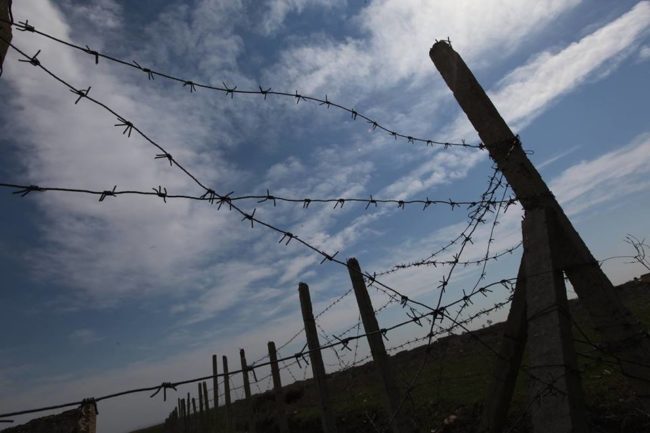
 Two civilians were killed and one injured in Azerbaijan on 4 July after an exchange of fire at the Nagorno-Karabakh line of contact. Authorities in Nagorno-Karabakh and Azerbaijan have traded accusations over who fired first.
Two civilians were killed and one injured in Azerbaijan on 4 July after an exchange of fire at the Nagorno-Karabakh line of contact. Authorities in Nagorno-Karabakh and Azerbaijan have traded accusations over who fired first.
Azerbaijan’s Foreign Ministry accused Armenia of violating the ceasefire, killing 50-year-old Sahiba Guliyeva and her granddaughter, 2-year-old Zahra Guliyeva.
According to Hikmat Hajiyev, spokesperson for the ministry, another civilian, Sarvinaz Guliyeva, 52, was wounded.
Hajiyev claimed the deaths were the ‘result of targeted and deliberate attacking of civilians and civilian objects’ by Armenia’s armed forces.
According to a statement from Nagorno-Karabakh’s Ministry of Defence, Azerbaijan first opened fire from a position in the village of Alkhanli in the evening of 4 July, which ‘forced [Nagorno-Karabakh’s army] to resort to retaliatory actions’.
Artak Beglaryan, spokesman for the prime minister of Nagorno-Karabakh tweeted on 5 July that Azerbaijan must be held responsible.
Sorry to hear about human (esp civilian) losses no matter from which side, but #Azerbaijan must be responsible for violations & provocations
— Artak Beglaryan (@Artak_Beglaryan) July 5, 2017
The OSCE Minsk Group, who have been mediating the conflict since 1992, said they had received information of renewed violence and urged all sides to cease military action on 5 July, claiming that ‘violence only begets further violence and accomplishes nothing’.
According to the Minsk Group, the ‘only responsible and humane way to resolve this long-standing conflict is for the sides to return to the negotiation table in good faith’.
[Read on OC Media: A year after the war in Nagorno-Karabakh’s frontline village of Talish]
A recent report from the International Crisis Group — an independent peacebuilding group active in Nagorno-Karabakh — concluded in June that Armenia and Azerbaijan are now closer to a full-scale war than at any point since the two countries signed a ceasefire in 1994.
[Read on OC Media: Armenia and Azerbaijan ‘closer to war than any point since 1994’]
Nagorno-Karabakh is a disputed territory internationally recognised as a part of Azerbaijan, who have not exercised power over most of the region since 1991. Most of the region, which has a majority ethnic Armenian population, is controlled by Stepanakert, backed by Armenia. The conflict, which dates back to the break-up of the Soviet Union, cost the lives of some 30,000 people and displaced 1 million.
For ease of reading, we choose not to use qualifiers such as ‘de facto’, ‘unrecognised’, or ‘partially recognised’ when discussing institutions or political positions within Abkhazia, Nagorno-Karabakh, and South Ossetia. This does not imply a position on their status.




 5 July 2017
5 July 2017


